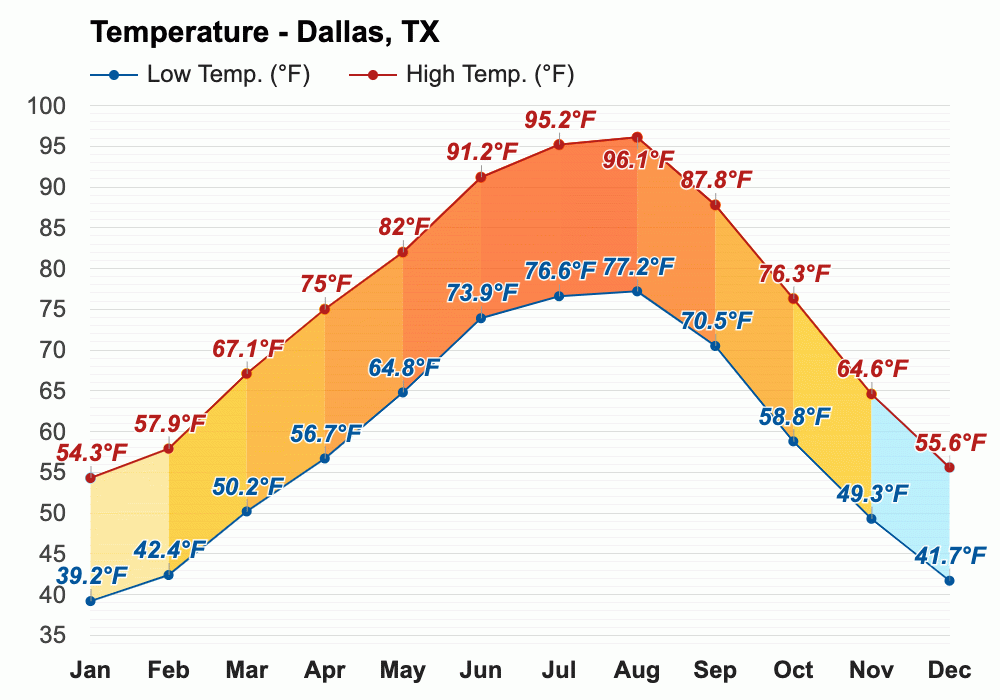Dallas, Texas, known for its vibrant culture and booming economy, is also recognized for its unpredictable weather patterns, particularly concerning rainfall. The city experiences a varied climate, and understanding its rainfall trends can help residents and visitors alike prepare for the wet seasons. This article will dive into the rainfall statistics of Dallas, analyze trends over the years, and provide practical tips for staying dry during those unexpected downpours.
Dallas Rainfall Overview

The climate in Dallas is classified as humid subtropical, characterized by hot summers and mild winters. Rainfall is relatively evenly distributed throughout the year, though certain months tend to be wetter than others. On average, Dallas receives about 37 inches of rain annually, but this figure can fluctuate significantly depending on various climatic factors.
Monthly Rainfall Trends
To grasp the rainfall dynamics in Dallas, it is essential to look at monthly averages:
- **January**: 2.5 inches
- **February**: 2.7 inches
- **March**: 3.7 inches
- **April**: 4.6 inches
- **May**: 5.3 inches (typically the wettest month)
- **June**: 3.7 inches
- **July**: 2.5 inches
- **August**: 2.6 inches
- **September**: 3.4 inches
- **October**: 4.1 inches
- **November**: 3.2 inches
- **December**: 3.1 inches
From this breakdown, it’s clear that late spring (April and May) is the peak season for rainfall in Dallas, often resulting in thunderstorms and heavy downpours. Understanding this trend is vital for planning outdoor activities or events.
Historical Rainfall Patterns

Over the years, Dallas has experienced notable fluctuations in rainfall. Historical data indicates that the city has gone through periods of both drought and excessive rainfall. For instance:
- **Drought Years**: In the 1950s and 2011, Texas faced significant droughts, impacting not only Dallas but the entire region.
- **Flood Events**: In contrast, the floods in 1935 and 2001 caused severe damage and highlighted the city’s vulnerability to heavy rains.
These historical extremes illustrate the importance of preparedness. The city’s infrastructure and emergency services have evolved in response to these challenges, but individual preparedness remains crucial.
Climate Change and Rainfall Trends

Recent studies have shown that climate change is altering rainfall patterns across the globe, and Dallas is no exception. Warmer temperatures can lead to more intense rainfall events, with studies suggesting that the frequency of heavy downpours in Texas has increased over the past few decades. The Texas Climate Adaptation Toolkit notes that:
- **Increased Rainfall**: Heavy rainfall events are projected to become more frequent, particularly in the spring and fall.
- **Temperature Rise**: Average temperatures in Texas are expected to increase, contributing to more evaporation and altering precipitation patterns.
Residents need to stay informed about these trends and adjust their preparedness strategies accordingly.
Staying Dry: Practical Tips for Dallas Residents

With the unpredictable nature of Dallas rainfall, it’s essential to have strategies in place to stay dry. Here are some practical tips:
- Invest in Quality Rain Gear: A durable raincoat and waterproof boots can make a significant difference on rainy days.
- Keep an Umbrella Handy: A compact, sturdy umbrella can provide quick protection from sudden showers.
- Plan Ahead: Check the weather forecast regularly, especially during the spring months when rain is more likely.
- Use Waterproof Bags: Protect your electronics and important documents with waterproof bags when heading out during rainy seasons.
- Stay Indoors During Storms: If thunderstorms are forecasted, it’s safer to stay indoors until the storm passes.
- Monitor Local Alerts: Sign up for local weather alerts to stay informed about severe weather warnings or flash flood advisories.
By incorporating these tips into your routine, you can minimize the impact of unexpected rainfall.
Case Studies: Community Response to Rain Events
Dallas has faced significant challenges from heavy rainfall in the past, prompting community responses and infrastructure improvements. Two notable case studies illustrate this:
- 2015 Flooding Incident: In May 2015, a series of storms led to flash flooding in Dallas, causing road closures and damage. The city’s response involved improving drainage systems and increasing public awareness about flood risks.
- 2020 Storm Preparedness Program: Following increased rainfall events, the city initiated community workshops to educate residents on emergency preparedness for floods, including creating emergency kits and evacuation plans.
These case studies underscore the importance of community engagement and infrastructure development in response to rainfall challenges.
Dallas’s rainfall trends exhibit a complex interplay of seasonal patterns and historical extremes influenced by climate change. Understanding these trends is essential for residents and visitors alike to navigate the city’s weather effectively. By staying informed about rainfall statistics, preparing for wet conditions, and being aware of community resources, individuals can not only stay dry but also contribute to a safer and more resilient Dallas.
In summary, recognizing the monthly rainfall averages, historical patterns, and the impact of climate change can empower Dallas residents to take proactive measures against unexpected showers. By implementing practical strategies such as investing in quality rain gear, planning ahead, and participating in community preparedness initiatives, individuals can navigate the Dallas weather with confidence. Remember, a little preparation goes a long way in ensuring that you stay dry, no matter what the skies bring.